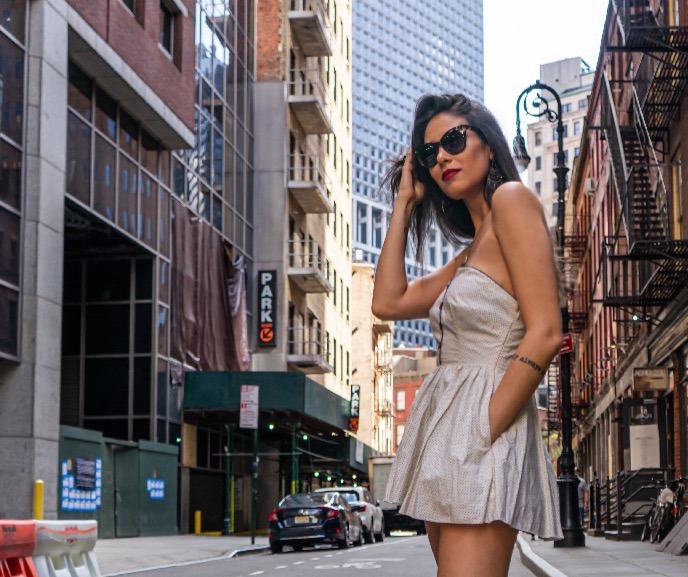INSIDE THE FASHION INDUSTRY – How Emerging Designers Can Thrive in 2025’s Consumer Spending Shift
- Barbara Sessim

- Jul 24
- 3 min read

In 2025, rising tariffs, price increases, and evolving consumer priorities are reshaping the business of fashion. Consumers are tightening their budgets while demanding transparency, inclusivity, and real value in exchange for their loyalty. For emerging designers, this new landscape may seem challenging, but it’s also full of opportunities for those who can adapt strategically.
1. Value Reigns Supreme – Position Your Brand Strategically
According to Vogue Business, over one-third of beauty consumers plan to cut spending if prices continue to rise. Yet brands such as The Ordinary, Beauty of Joseon, and e.l.f. Beauty are thriving by offering high-efficacy products at accessible prices. For new designers, clearly communicating your brand’s value proposition through quality, transparency, and pricing that resonates with financially conscious Gen Z consumers is critical.
2. Build Trust Through Storytelling and Transparency
Today’s consumers are drawn to brands with authentic narratives. Founder-led lines such as Rare Beauty and Rhode have gained significant traction by sharing their journeys and values openly (Vogue Business). Emerging designers can follow suit by giving customers an inside look into their creative process, material sourcing, and the brand ethos behind their collections. Authenticity builds trust, and trust drives loyalty.
3. Leverage Digital Marketing, Community, and Purpose-Driven Strategies
Brands dominating the Vogue Business Beauty Index like Charlotte Tilbury, Fenty Beauty, and Nars excel at inclusive, innovative digital campaigns and community-driven engagement. Even small designers can make an impact by collaborating with niche creators, experimenting with interactive campaigns, aligning with social causes, or creating gamified shopping experiences that build deeper consumer connections.
4. Adapt to Tariffs and Supply Chain Volatility
Recent trade policies have led to tariffs of up to 55% on Chinese imports, with additional increases in South Korea, Japan, and the EU (Vogue Business, Business Insider, MarketWatch). Many brands, including e.l.f. Beauty, are mitigating these pressures by diversifying production, raising prices strategically, and acquiring complementary labels. For emerging designers, auditing supply chains and exploring nearshoring or tariff-friendly sourcing options can build resilience and safeguard profitability.
5. Innovate with Efficiency and Inclusion
Despite economic headwinds, beauty and fashion consumers continue to invest in self-care, wellness, and products that bring emotional value (Vogue Business, Business Insider). Designers who offer comfort-driven, wellness-inspired collections with transparent production methods can meet these demands while standing out in a crowded market.
Case Studies: Strategies That Work
The Ordinary – Affordable, effective offerings built on transparency (Vogue Business).
e.l.f. Beauty & Rhode – Diversified portfolios and acquisitions that increase resilience (MarketWatch, Vogue Business).
Charlotte Tilbury – Digital collaborations and cultural storytelling that capture consumer attention (Vogue Business).
Beauty of Joseon – Unique cultural narrative appealing to Gen Z (Vogue Business).
LVMH and Kering – Aggressive price increases that risk alienating middle-income buyers (Reuters, Financial Times). Emerging designers can fill the value gap with premium yet accessible offerings.
Six-Point Action Plan for Emerging Designers
Audit and Adapt Costs: Diversify sourcing and mitigate tariff-related risks.
Define Core Hero Products: Focus on a few standout pieces that clearly communicate value.
Embrace Authentic Storytelling: Share your creative journey and production process openly.
Master Digital Channels: Engage niche communities with interactive, inclusive campaigns.
Innovate with Value in Mind: Offer products that are both accessible and emotionally resonant.
Foster Loyalty: Build lasting relationships through engagement and feedback loops.
Consumers in 2025 are savvy, cautious, and value-driven. They expect transparency, inclusivity, and authenticity without overpaying. For emerging designers, this is not a crisis but an opportunity to move quickly, tell compelling stories, and cultivate deeply engaged communities. Prioritizing value-first innovation, supply chain resilience, and authentic engagement will position your brand to thrive in this changing market.
I have worked with many designers to develop tailored business plans that address their specific needs and guide them through the complexities of the fashion industry, even during challenging times. If you are ready to build a resilient and purpose-driven brand, schedule your free 30-minute strategy call with me here: https://go.oncehub.com/BarbaraSessim.







Comments